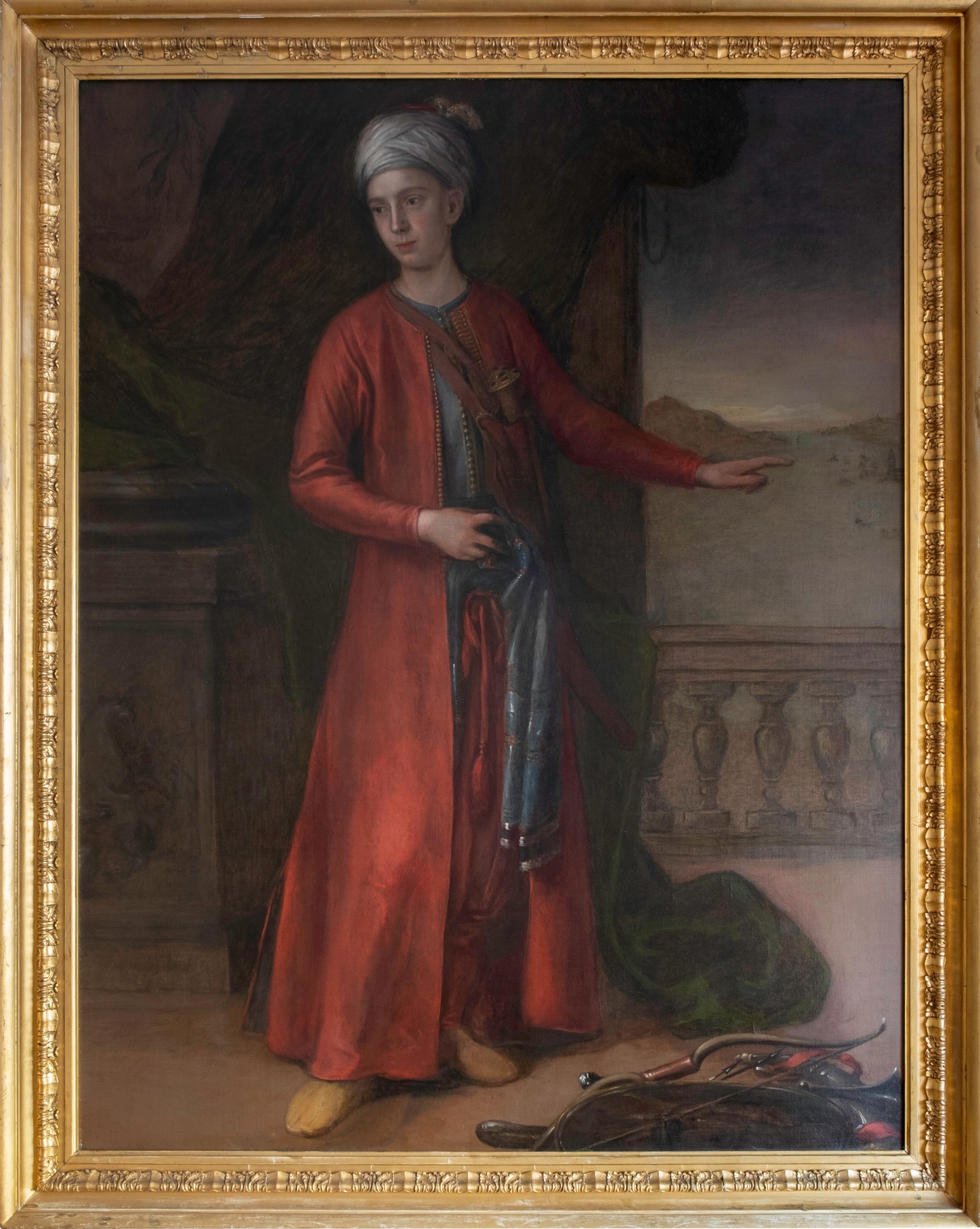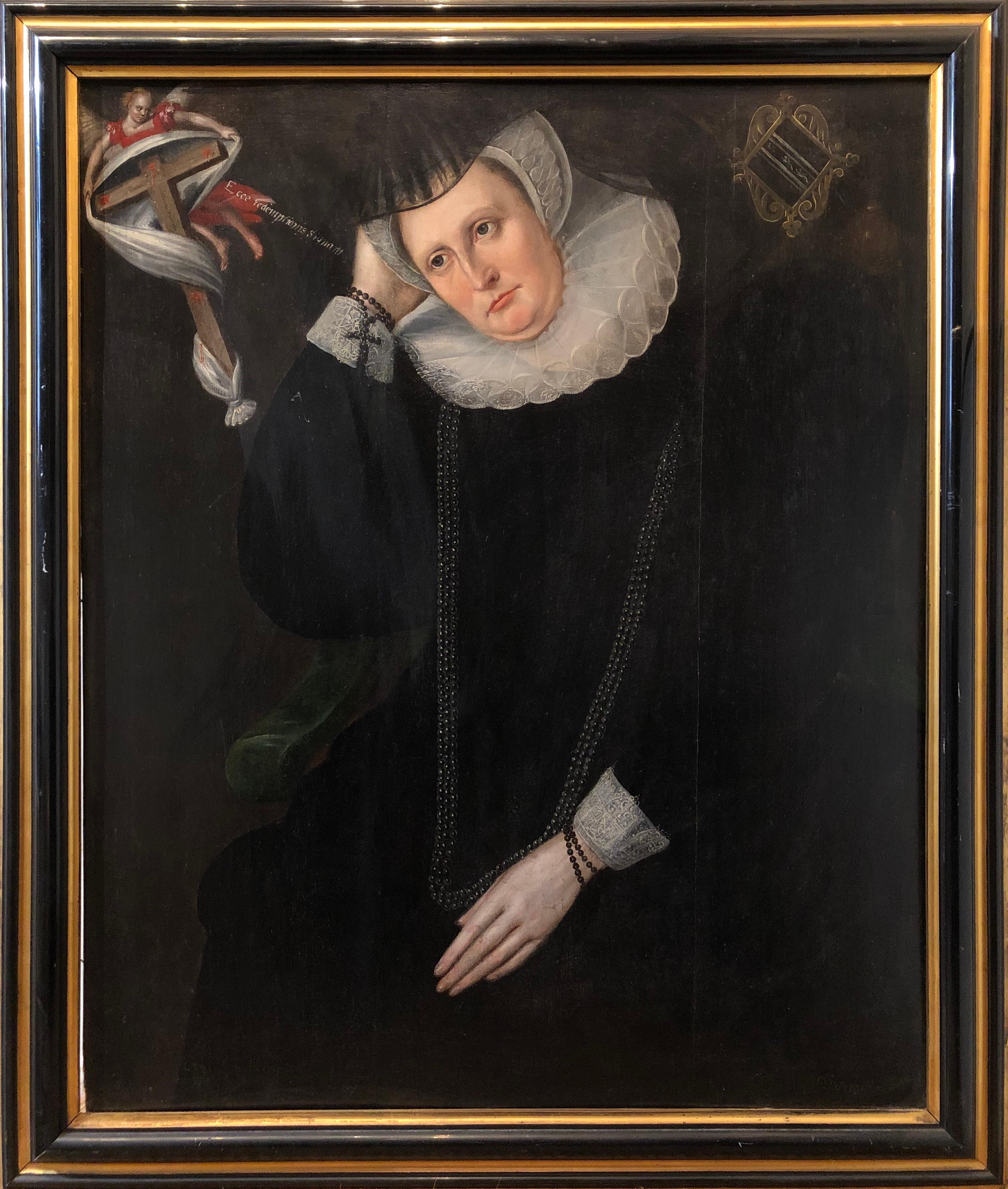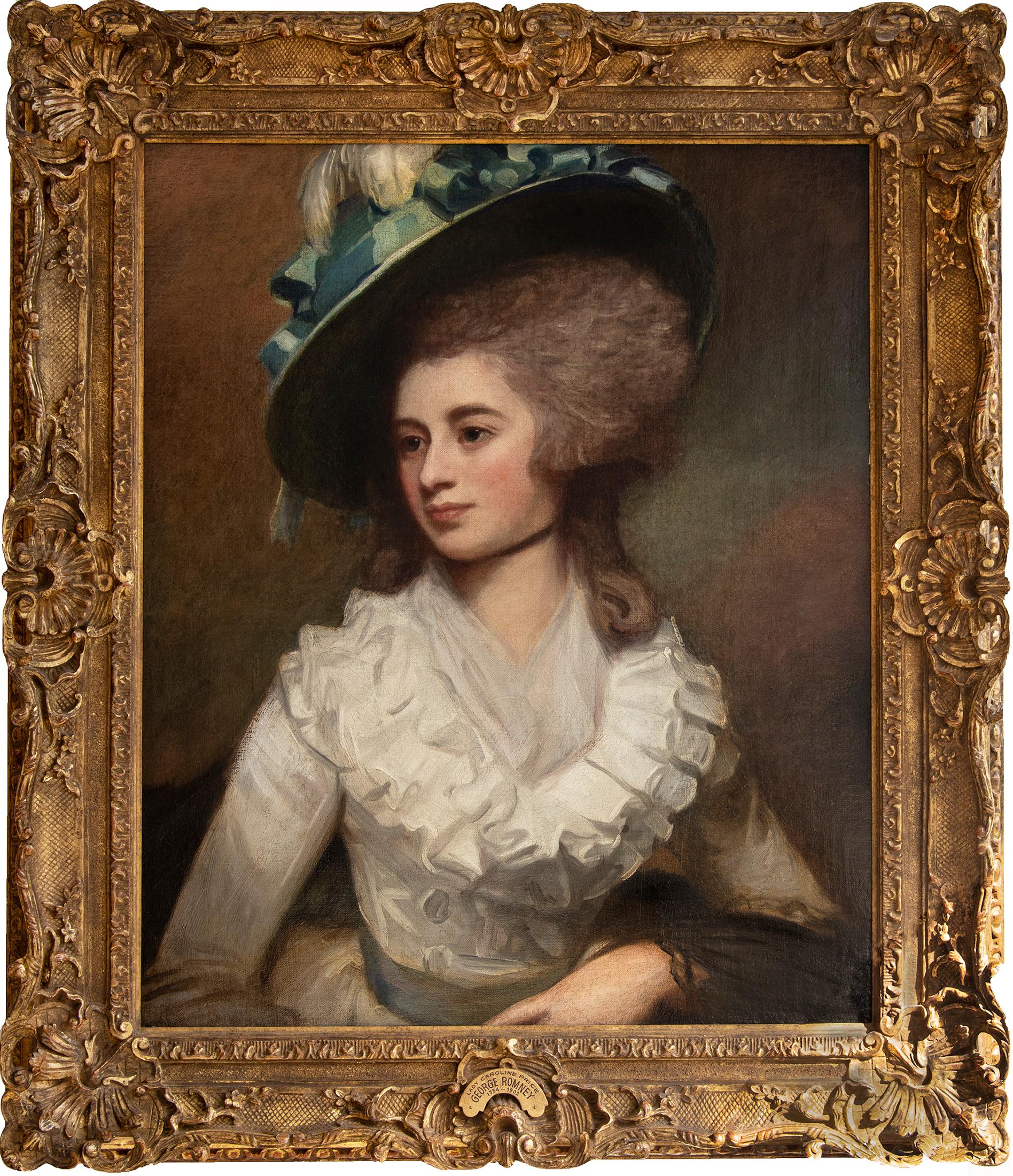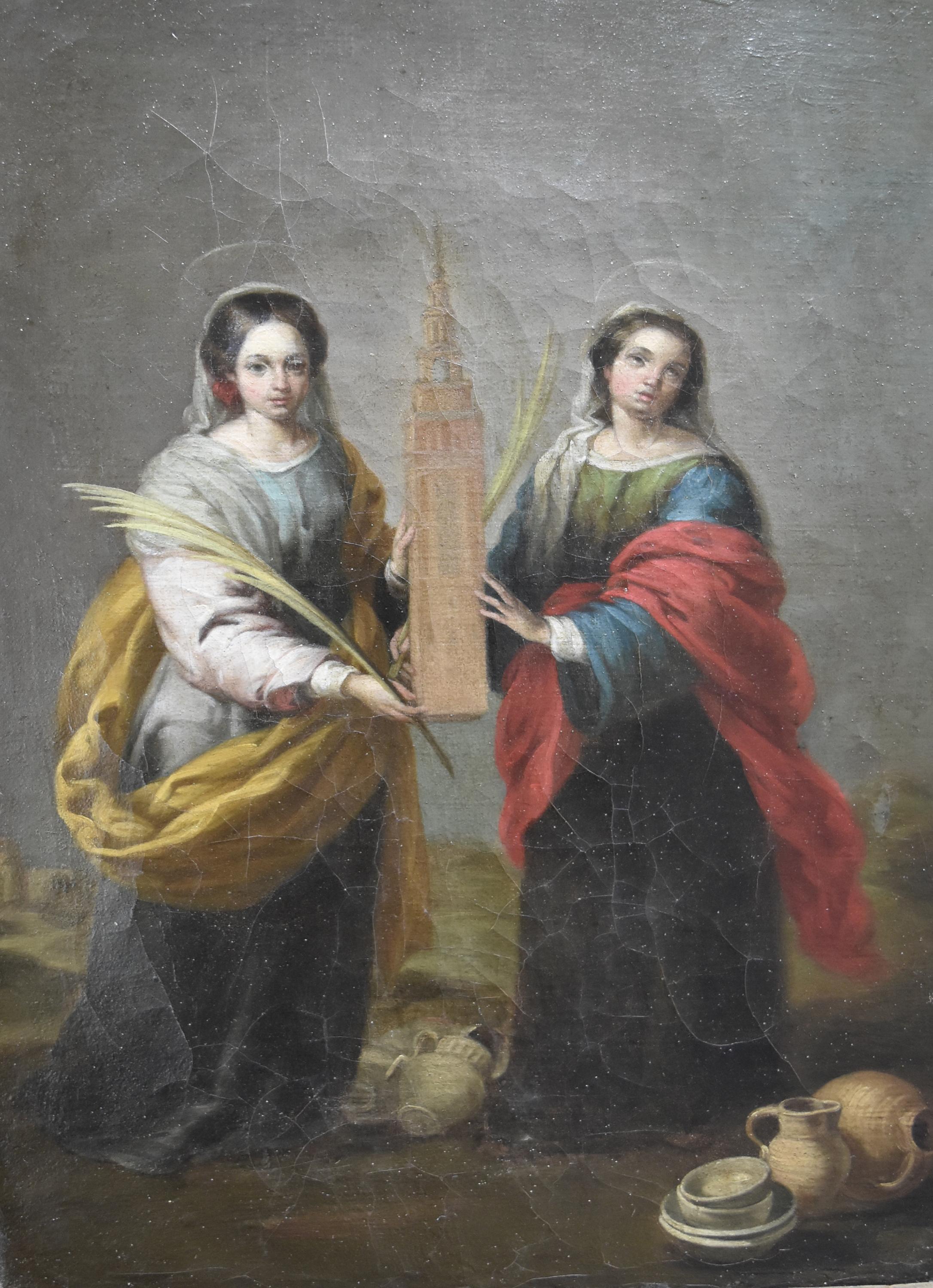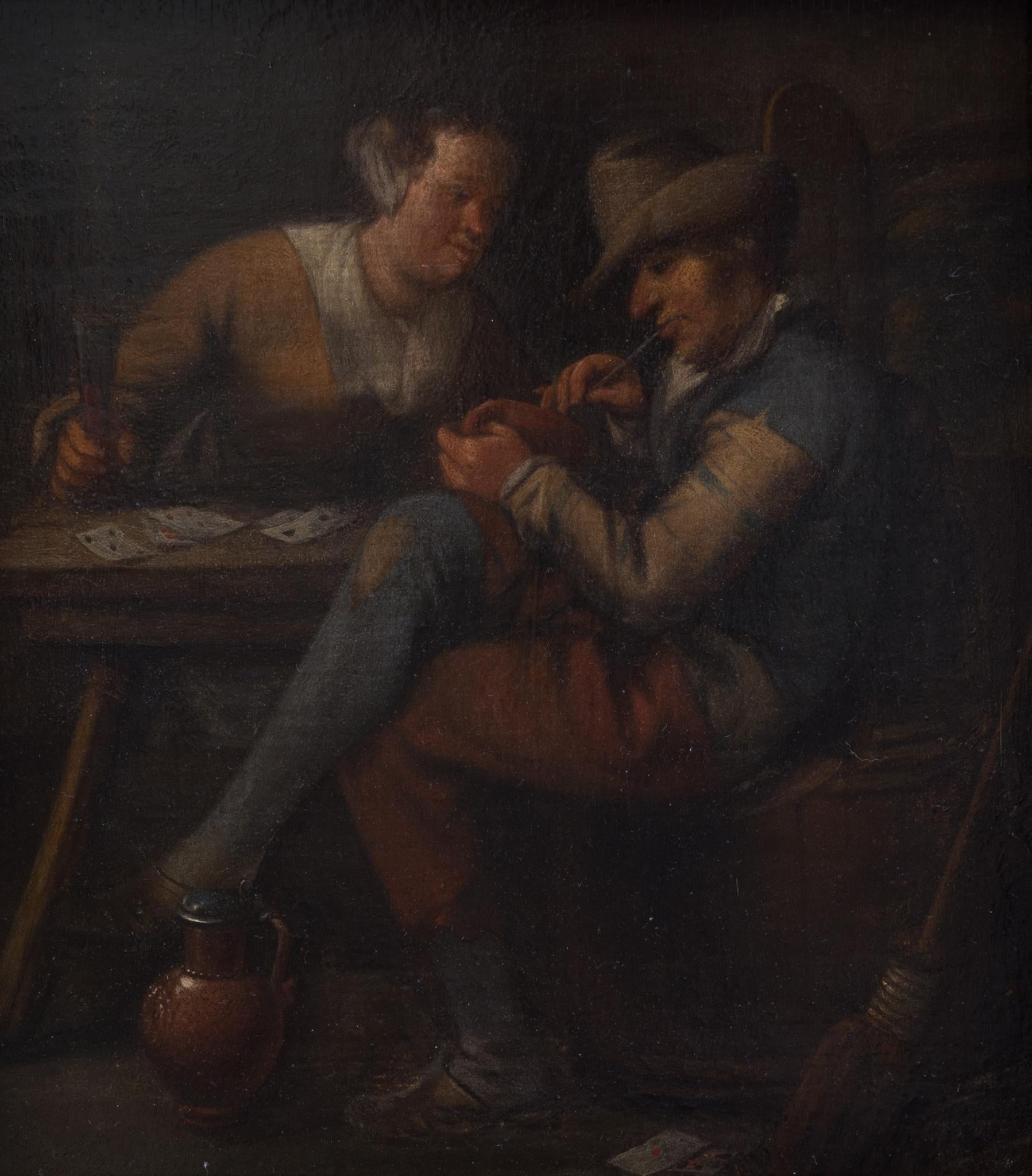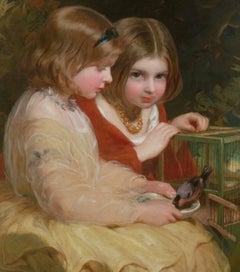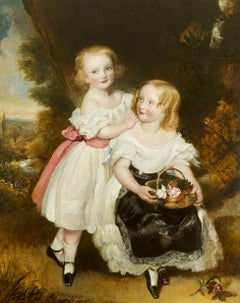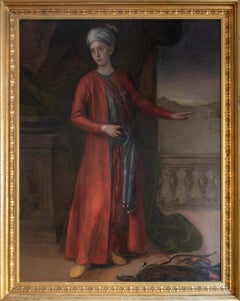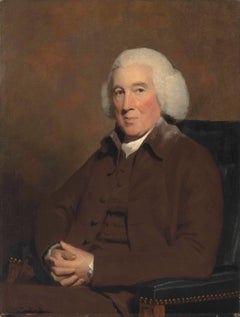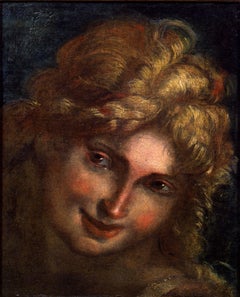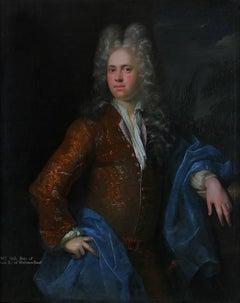
The Honorable Mildmay Fane, English Portrait by Alexis Simon Belle 18th Century
View Similar Items
Want more images or videos?
Request additional images or videos from the seller
1 of 8
Alexis Simon Belle 1The Honorable Mildmay Fane, English Portrait by Alexis Simon Belle 18th Century
About the Item
- Creator:Alexis Simon Belle 1 (1674 - 1734, French)
- Dimensions:Height: 58.27 in (148 cm)Width: 48.82 in (124 cm)
- Medium:
- Movement & Style:
- Period:
- Condition:
- Gallery Location:Lincoln, GB
- Reference Number:1stDibs: LU80517503322
About the Seller
No Reviews Yet
Vetted Seller
These experienced sellers undergo a comprehensive evaluation by our team of in-house experts.
1stDibs seller since 2017
8 sales on 1stDibs
Typical response time: 15 hours
More From This SellerView All
- The Pet Bullfinch, A Portrait of Two Children by James Sant 19th / 20th CenturyBy James SantLocated in Lincoln, GB‘The Pet Bullfinch’ James Sant CVO RA (1820-1916) oil on canvas 30 x 25 in. (76.2 x 63.5 cm.) James Sant was a well known Victorian painter particularly of women and children, as both portraits are allegorical subjects, i.e. a painting that can be interpreted to have a hidden meaning, often political or moral. Sant exhibited at the Royal Academy and in 1871 was appointed Principal Painter in Ordinary by Queen Victoria, having painted many portraits of the Royal children. One of his most famous being that of Prince Leopold and Princess Beatrice...Category
20th Century Victorian Portrait Paintings
MaterialsOil
$23,731 Sale Price35% Off - Regency Sisters, A Portrait of Two Children - Fredrick Yeates HurlestoneBy Frederick Yeates HurlestoneLocated in Lincoln, GBFrederick Yeates Hurlestone (1800 – 1869) Regency Sisters Oil on Canvas Size: 153cm x 126cm framed Frederick Yeates Hurlstone (1800 - 1869) was an English portrait and historical painter. Hurlstone exhibited at the Royal Academy for many years. He was a member of the Society of British Artists and was President of the Society until his death. He was born in London, the eldest son by his second marriage of Thomas Y. Hurlstone, one of the proprietors of the "Morning Chronicle" (his granduncle, Richard Hurlstone, was a well-known portrait-painter a generation earlier). He began life in the office of his father's journal, but, while still very young, became a pupil of Sir William Beechey, afterwards studying under Sir Thomas Lawrence, and also, it is said, under Benjamin Haydon. His first original work was an altar-piece, painted in 1816, for which he received 20 pounds. In 1820 he was admitted as a student of the Royal Academy, where in 1822 he gained the silver medal for the best copy made in the school of painting, and in 1823 the gold medal for historical painting, the subject being "The Contention between the Archangel Michael and Satan for the Body of Moses". He first exhibited in 1821, sending to the Royal Academy "Le Malade Imaginaire" and to the British Institution a "View near Windsor". These were followed at the Academy in 1822 by "The Return of the Prodigal Son" and a portrait, in 1823 by five portraits, and in 1824 by his "Archangel Michael" and some more portraitsOne of his best early works was "A Venetian Page with a Parrot", exhibited at the British Institution in 1824. In 1824 also he contributed "The Bandit Chief" to the first exhibition of the Society of British Artists. He continued to send portraits to the Royal Academy until 1830, but in 1831 he was elected a member of the Society of British Artists, after which he seldom exhibited elsewhere. He was chosen president in 1835, and again in 1840, retaining the office until his death. He contributed to the society's exhibitions upwards of three hundred portraits and other works, among them being "The Enchantress Armida", exhibited in 1831; "Haidee aroused from her Trance by the sound of Music", 1834; "Eros", 1836; "Italian Boys playing at the National Game of Mora" and the "Prisoner of Chillon", 1837; "The Scene in St. Peter's, Rome, from Byron's Deformed Transformed", 1839; "The Convent of St. Isidore: the Monks giving away provisions", 1841; and a "Scene in a Spanish Posada in Andalusia", 1843. In 1844 and, for the last time, in 1845 he again sent portraits to the Academy. His subsequent works at the Society of British Artists included "The Sons of Jacob bringing the blood-stained garment of Joseph to their Father", 1844; "Salute, Signore", 1845; "A Girl of Sorrento at a Well", 1847; "Inhabitants of the Palace of the Cæsars—Rome in the Nineteenth Century" 1850; "Columbus asking Alms at the Convent of La Rabida" 1853; "The Last Sigh of the Moor" (or "Boabdil el Chico...Category
19th Century Victorian Figurative Paintings
MaterialsOil
$39,456 Sale Price20% Off - Thomas Beach (1738 - 1806) Two Children Oil on CanvasBy Thomas BeachLocated in Lincoln, GBTHOMAS BEACH (1738-1806) Two Children Oil on canvas Canvas size : 50 x 40 inches (127 x 102 cms) Framed size : 57 x 47 inches (145 x 120 cms) Frame : Early 20th century carved ...Category
18th Century Figurative Paintings
MaterialsOil
$29,592 Sale Price40% Off - Sir Roger de Coverley and his Hounds A Sporting Portrait, signed and dated 1843By Richard Barrett DavisLocated in Lincoln, GBSir Roger De Coverly and his Hounds” by Richard Barrett Davis (1782-1854) Oil on Canvas, Unframed Size: 85 x 112cm Framed Size: 114 x 141cm Signed and dated 1843 Richard Barrett D...Category
19th Century Old Masters Portrait Paintings
MaterialsOil
- Crossing The Ford An Oil Study for the Original by W Mulready, Tate BritainBy William MulreadyLocated in Lincoln, GB‘Crossing the Ford’ by William Mulready (1786-1863) Oil Sketch. Size: 28cm x 23cm framed. Image size: 17cm x 13cm William Mulready was born in Ennis, County Clare...Category
19th Century Old Masters Figurative Paintings
MaterialsOil
- School of Liege, The Martyrdom of St Paul, A Religious PortraitLocated in Lincoln, GBSchool of Liège, mid-17th century The Martyrdom of St Paul oil on canvas 57 3/4 by 42 3/8 in.; 146.8 by 107.6 cm. PROVENANCE J.J. Chapuis (red wax seal...Category
Mid-17th Century Old Masters Figurative Paintings
MaterialsOil
You May Also Like
- 18th C. Portrait of the 4th Earl of Sandwich a View of Constantinople BeyondLocated in London, GBJohn Montagu, 4th Earl of Sandwich (13 November 1718 – 30 April 1792) Attributed to George Knapton (1698-1778) Dressed in the Turkish manner, stand...Category
18th Century Old Masters Figurative Paintings
MaterialsOil
- 18th Century Oil Painting Portrait of Provost John Pitcairn of DundeeBy Sir Henry RaeburnLocated in London, GBThe pendant to the present portrait showing John Pitcairn's wife Jean, née Robertson, is in the Huntington Art Gallery, San Marino. Both works are datable to the 1790s. Pitcairn, who served as Provost of Dundee from 1782-84, a position his father-in-law also held from 1731-32, later sat to Raeburn for another portrait, dated to circa 1820, which is now in the Royal Scottish Academy, Edinburgh Sale of Christie's London: Wednesday, July 9, 2014 [Lot 00212] Old Master & British Paintings Day Sale Sold For 22,500 GBP Premium Provenance By descent from the sitter to his great-grandson, Ronald Andrew Pitcairn of Pitcullo; Christie's, London, 25 June 1904, lot 58 (200 gns. to Wallis). Alexander Reid, Glasgow. With Agnew's, London, where acquired by A.R. Wilson Wood, 7 April 1909; Christie's, London, 26 June 1914, lot 78 (850 gns. to Agnew). Anonymous sale; Christie's, London, 24 November 1972, lot 27 (320 gns.) Private collection, Dublin, Ireland Exhibition Edinburgh, Royal Scottish Academy, 1876, no. 256 Literature W. Armstrong, Sir Henry Raeburn, London, 1901, p. 110. J. Greig, Sir Henry Raeburn, R.A., His life and work with a catalogue of his pictures, London, 1911, p. 55. R. Asleson and S.M. Bennett, British Paintings at The Huntington, New Haven and London, 2001, p. 312, fig. 12 Sir Henry Raeburn FRSE RA RSA (4 March 1756 – 8 July 1823) was a Scottish portrait painter and Scotland's first significant portrait painter since the Union to remain based in Scotland. He served as Portrait Painter to King George IV in Scotland. Raeburn was born the son of a manufacturer in Stockbridge, on the Water of Leith: a former village now within the city of Edinburgh. He had an older brother, born in 1744, called William Raeburn. His ancestors were believed to have been soldiers, and may have taken the name "Raeburn" from a hill farm in Annandale, held by Sir Walter Scott's family. Orphaned, he was supported by William and placed in Heriot's Hospital, where he received an education. At the age of fifteen he was apprenticed to the goldsmith James Gilliland of Edinburgh, and various pieces of jewellery, mourning rings and the like, adorned with minute drawings on ivory by his hand, still exist. Soon he took to the production of carefully finished portrait miniatures; meeting with success and patronage, he extended his practice to oil painting, at which he was self-taught. Gilliland watched the progress of his pupil with interest, and introduced him to David Martin, who had been the favourite assistant of Allan Ramsay the Latter, and was now the leading portrait painter in Edinburgh. Raeburn was especially aided by the loan of portraits to copy. Soon he had gained sufficient skill to make him decide to devote himself exclusively to painting. George Chalmers (1776; Dunfermline Town Hall) is his earliest known portrait. In his early twenties, Raeburn was asked to paint the portrait of a young lady he had noticed when he was sketching from nature in the fields. Ann was the daughter of Peter Edgar of Bridgelands, and widow of Count James Leslie of Deanhaugh. Fascinated by the handsome and intellectual young artist, she became his wife within a month, bringing him an ample fortune. The acquisition of wealth did not affect his enthusiasm or his industry, but spurred him on to acquire a thorough knowledge of his craft. It was usual for artists to visit Italy, and Raeburn set off with his wife. In London he was kindly received by Sir Joshua Reynolds, the president of the Royal Academy, who advised him on what to study in Rome, especially recommending the works of Michelangelo, and gave Raeburn letters of introduction for Italy. In Rome he met his fellow Scot Gavin Hamilton, Pompeo Girolamo Batoni and Byers, an antique dealer whose advice proved particularly useful, especially the recommendation that "he should never copy an object from memory, but, from the principal figure to the minutest accessory, have it placed before him." After two years of study in Italy he returned to Edinburgh in 1787, and began a successful career as a portrait painter. In that year he executed a seated portrait of the second Lord President Dundas. Examples of his earlier portraiture include a bust of Mrs Johnstone of Baldovie and a three-quarter-length of Dr James Hutton...Category
18th Century Old Masters Figurative Paintings
MaterialsOil
- Head of an AngelLocated in New York, NYProcaccini was born in Bologna, but his family moved to Milan when the artist was eleven years old. His artistic education was evidently familial— from his father Ercole and his elder brothers Camillo and Carlo Antonio, all painters—but his career began as a sculptor, and at an early age: his first known commission, a sculpted saint for the Duomo of Milan, came when he was only seventeen years old. Procaccini’s earliest documented painting, the Pietà for the Church of Santa Maria presso San Celso in Milan, was completed by 1604. By this time the artist had made the trip to Parma recorded by his biographers, where he studied Correggio, Mazzola Bedoli, and especially Parmigianino; reflections of their work are apparent throughout Procaccini's career. As Dr. Hugh Brigstocke has recently indicated, the present oil sketch is preparatory for the figure of the angel seen between the heads of the Virgin and St. Charles Borrommeo in Procaccini's altarpiece in the Church of Santa Afra in Brescia (ill. in Il Seicento Lombardo; Catalogo dei dipinti e delle sculture, exh. cat. Milan 1973, no. 98, pl. 113). As such it is the only known oil sketch of Procaccini's that can be directly connected with an extant altarpiece. The finished canvas, The Virgin and Child with Saints Charles Borrommeo and Latino with Angels, remains in the church for which it was painted; it is one of the most significant works of Procaccini's maturity and is generally dated after the artist's trip to Genoa in 1618. The Head of an Angel is an immediate study, no doubt taken from life, but one stylistically suffused with strong echoes of Correggio and Leonardo. Luigi Lanzi, writing of the completed altarpiece in 1796, specifically commented on Procaccini's indebtedness to Correggio (as well as the expressions of the angels) here: “Di Giulio Cesare...Category
17th Century Old Masters Figurative Paintings
MaterialsPaper, Canvas, Oil
- Portrait of Lady Bagot - Niece to the Duke of WellingtonBy Sir John HoppnerLocated in Miami, FLThe sitter is Mary Charlotte Anne Wellesly-Pole, eldest daughter of William, 4th Earl of Mornington and niece to the Duke of Wellington. This is one of Hoppner's best works. The sitt...Category
1780s Old Masters Portrait Paintings
MaterialsOil
- 17th Century by Giuseppe Assereto Portrait of an Elderly Woman Oil on CanvasBy Giuseppe AsseretoLocated in Milano, LombardiaGiuseppe Assereto (Genova - 1626 ca – Genova 1656/57) Portrait of an elderly woman, possible portrait of Maddalena Massone, wife of Gioacchino Assereto Oil on canvas, cm. 65,5 x 51,5...Category
Early 17th Century Old Masters Portrait Paintings
MaterialsCanvas, Oil
- Lady Dormore - A 16th Century Portrait of a key member of Shakespeare's EnglandLocated in London, GBLady Dormer, Mary Browne c. 1592 oil on panel 35 x 29 inches, unframed; 41 x 34.75 inches, inc. frame Inscribed 'Lady Dormore' Mary married Henry Wriothesley, 2nd Earl of Southampton who gave birth to Henry Wriothesley, 3rd Earl of Southampton - one of the great figures in Shakespears"s circle and founder of the Virginia company, developers of Virginia USA. Henry Wriothesley, born 6 October 1573 at Cowdray House, Sussex, was the only son of Henry Wriothesley, 2nd Earl of Southampton, by Mary Browne, the only daughter of Anthony Browne, 1st Viscount Montague, and his first wife, Jane Radcliffe.[5] He had two sisters, Jane, who died before 1573, and Mary (c. 1567 – 1607), who in June 1585 married Thomas Arundell, 1st Baron Arundell of Wardour.[6] After his father's death, Southampton's mother married firstly, on 2 May 1595, as his second wife, Sir Thomas Heneage (d. 17 October 1595), Vice-Chamberlain of the Household, and secondly, between 5 November 1598 and 31 January 1599, Sir William Hervey. She died in November 1607.[7] Early life When his father died on 4 October 1581 Southampton inherited the earldom and landed income valued at £1097 6s per annum. His wardship and marriage were sold by the Queen to her kinsman, Charles, Lord Howard of Effingham, for £1000. According to Akrigg, Howard then "entered into some further agreement, of which no documentation can now be found, which transferred to Lord Burghley personally the custody and marriage of the young Earl, but left Howard holding his lands", and late in 1581 or early in 1582 Southampton, then eight years of age, came to live at Cecil House in the Strand.[8] In October 1585, at age twelve, Southampton entered St John's College, Cambridge,[9] graduating M.A. on 6 June 1589.[10] His name was entered at the Gray's Inn legal society before he left the university, and he was admitted on 29 February 1588.[11] On Southampton's 16th birthday, 6 October 1589, Lord Burghley noted Southampton's age in his diary, and by 1590 Burghley was negotiating with Southampton's grandfather, Anthony Browne, 1st Viscount Montague, and Southampton's mother, Mary, for a marriage between Southampton and Lord Burghley's eldest granddaughter, Elizabeth Vere, daughter of Burghley's daughter, Anne Cecil, and Edward de Vere...Category
16th Century Old Masters Figurative Paintings
MaterialsOil
Recently Viewed
View AllMore Ways To Browse
English 18th Century Art
Portrait Old Man
Portrait Of Old Man
Military Portrait
English Old Master
Portrait Of An Old Man
18th Century English Painting
Old English 18th Century
English Portraits 18th
18th Century English Portrait
English 18th Century Portrait Paintings
Old Masters For Sale
Military Oil Portrait
John Simon
English Blue John
Oil On Canvas Military Portraits
18th Century Gilt Landscape
18th Century Military
